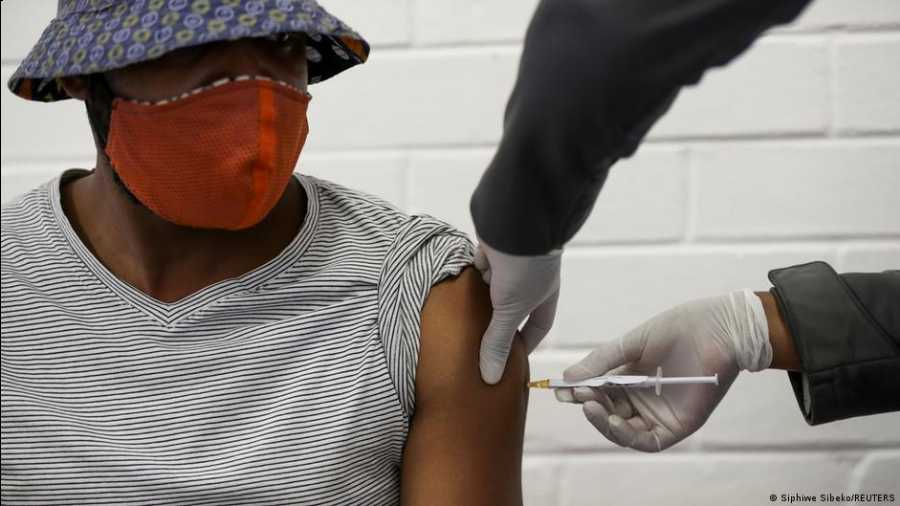The World Health Organisation has estimated 4.74 million excess deaths in India — 9.8 times the country’s official Covid-19 death toll — over the two years of the pandemic through an exercise that one expert said sought to “honour lives lost and hold… policymakers accountable”.
The mortality assessment exercise has estimated the worldwide full death toll linked directly or indirectly with the Covid-19 pandemic during 2020 and 2021 at 14.9 million, with the highest figures in India followed by Russia, Indonesia, the US and Brazil. Nearly a third of the excess deaths globally — 4.74 million — took place in India, according to the WHO estimates.
The estimates, released on Thursday, have emerged from a global collaboration supported by a technical advisory group and country consultations and are in line with several earlier, independent studies suggesting that India had vastly undercounted deaths during the pandemic.
The Union health ministry had on the basis of data from states documented 481,000 Covid-19 deaths during 2020 and 2021. The WHO exercise, based on extrapolation and modelling, has estimated 830,000 excess deaths in India during 2020 and a cumulative 4.74 million deaths by the end of 2021.

Less than an hour after the WHO released its estimates, the health ministry issued a statement saying India “strongly objects to the use of mathematical models” to project excess mortality estimates even though “authentic data” from the country’s death registration statistics for 2020 were available.
The WHO’s excess death data had been ready since January, but its release had been stalled by objections from India, The New York Times had reported.
The health ministry cited India’s latest civil registration system (CRS) statistics report that recorded 8.11 million deaths nationwide during 2020, around 474,000 excess deaths over the previous year’s count of 7.64 million. The WHO estimate for India’s excess deaths in 2020 is around 830,000.
The ministry said the WHO did not take into account this actual mortality data from India in making its estimates. “WHO for reasons best known to them conveniently chose to ignore the available data submitted by India and published the excess mortality estimates for which the methodology, source of data, and outcomes have been consistently questioned by India,” it said.
India had also questioned the WHO’s acknowledgement that the estimation model had used data for 17 states from websites and media reports, the ministry said, claiming that this reflected a “statistically unsound and scientifically questionable methodology of data collection”.
A WHO expert said the estimation exercise had included several consultations with Indian health officials and experts during which the methodology had been explained.
The group involved in the exercise would continue to engage with the government for a “mutual resolution”, the expert said.
“These new estimates use the best available data and have been produced using a robust methodology and a completely transparent approach,” said Samira Asma, assistant director-general for data, analytics and delivery at the WHO.
“Knowing how many people died in the pandemic will help us prepare better for the future,” Asma said at a news conference organised by the WHO to release the estimates. “Importantly, we need to honour the lives tragically cut short, lives we lost, and we must hold ourselves and our policymakers accountable.”
The estimates have suggested that 68 per cent of the excess deaths worldwide were concentrated in just 10 countries — India, Russia, Indonesia, the US, Brazil, Mexico, Peru, Turkey, Egypt and South Africa. And 84 per cent of the excess deaths were concentrated in Southeast Asia, Europe and the Americas.
The excess mortality includes deaths directly associated with Covid-19 as well as indirect deaths that could be the result of people unable to access prevention or treatment either under lockdown restrictions or because health systems were overburdened by Covid-19. The estimates can also be influenced by other factors such as fewer motor-vehicle accidents or occupational injuries.
Experts say India’s CRS statistics are intended to document all births and deaths but the system’s reliability hinges on what proportions of births and deaths are actually recorded. The CRS 2020 report itself has referred to Covid-19 contributing to underreporting in some states.
“The CRS deaths rely on civil registration data that still has missing deaths, so its estimates of total deaths in India will not be accurate without some correction,” Prabhat Jha, an epidemiologist at the University of Toronto, Canada, who was part of the WHO’s technical advisory group, told The Telegraph.
Most of India’s excess mortality occurred during 2021, under the fierce wave driven by the delta variant. “The most informative data will be for 2021, month by month,” Jha said.
Other experts said India’s response to the WHO analysis appeared to reflect a decision to ignore accumulating evidence from multiple studies.
“It’s natural to miss some of the Covid deaths,” the NYT reported Dr Bhramar Mukherjee, a professor of biostatistics at the University of Michigan School of Public Health who has been working with the WHO to review the data, as saying. But, she added, “Nobody’s been this resistant.”
Indian officials have asserted that the CRS 2020 report should be viewed as authentic mortality data. But public health experts familiar with mortality assessments not associated with the WHO exercise said the lockdown and other factors during Covid-19 could have led to an underreporting of deaths.
A top Indian epidemiologist said the CRS system, even during normal times, was not perfect. “In times of a crisis such as this pandemic, it would likely be less than perfect,” the epidemiologist said, seeking anonymity.
“We know many bodies were burned on river banks or released into rivers — was every one of those deaths registered?”
Jha, who had earlier collaborated with the Registrar-General of India, the agency that produces the CRS report annually, said the full CRS report, month by month, would be more informative as the excess deaths would have peaked during the August-October 2020 wave.
At least three independent studies between July 2021 and March 2022 had estimated India’s excess deaths at between 3 million and 4.9 million. The health ministry has questioned the methodology of each study, describing the findings as “flawed”, “speculative” or “fallacious”.
The epidemiologist who requested not to be named said the health ministry’s responses appeared focused on denying “something the government does not want heard”.












